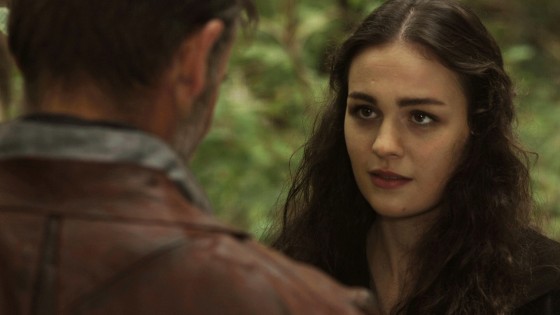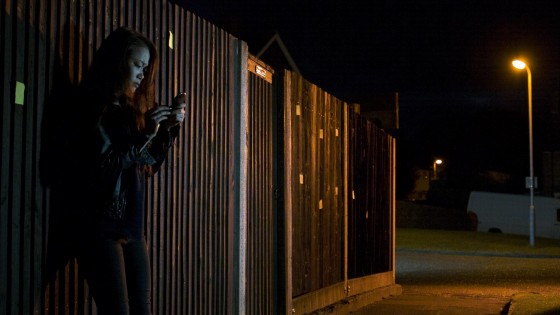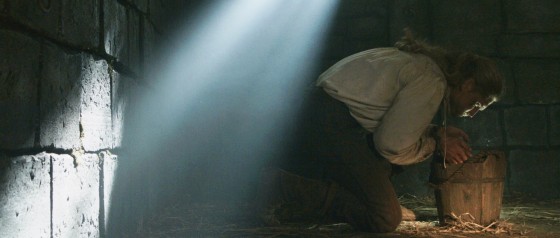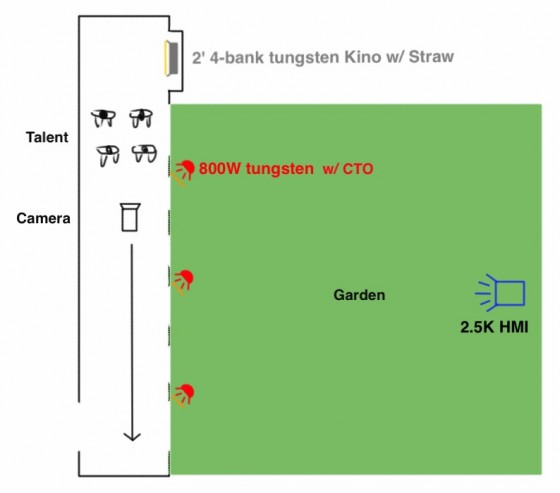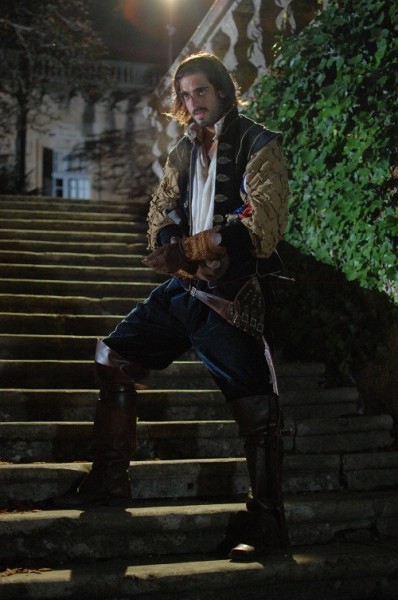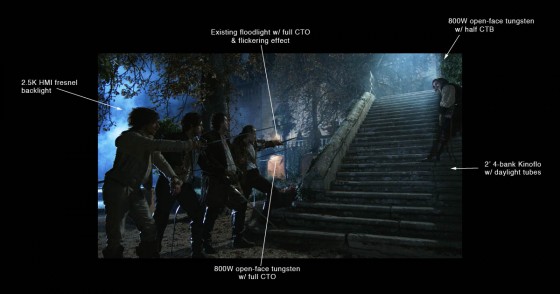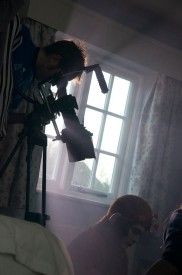After countless viewings on VHS and DVD over my lifetime, I finally got to see Labyrinth on the big screen today. The imagination and detail in this film are just astonishing. Every scene has little puppet creatures wandering or flying about in the background to bring the sets to life. In today’s screening I noticed, for the first time, that there are two bottles of milk – presumably delivered by the Goblin Milkman – outside the door of Jareth’s castle. How brilliant is that?

Anyway, while there are many awesome things about Labyrinth, one of the techniques that I think is put to particularly good effect in the film is in-camera substitution. Typically this involves one type of puppet leaving frame briefly, and a second puppet – of the same character – reappearing in its place. Puppets are often limited in the actions that they can perform, and while scenes will commonly use different versions of the puppet in different shots to cover the full range of actions, Henson sometimes uses different versions of the puppet in the same shot to sell the illusion of a single, living creature. And though many of these effects are fairly obvious to a modern audience, you can still admire their ingenious design and perfect timing.
Skip through the movie to the timecodes listed below to see some of the best substitution effects.
1. Goblin Under the Bedclothes – 11:40
In the film’s first puppet scene, Sarah’s parent’s bedroom becomes infested with goblins, building up to David Bowie’s big oh-so-eighties entrance. One goblin crawls along the bed, under the sheets, before emerging. It looks like the initial crawling is achieved by pulling a rough goblin shape along on a wire under the sheets. The shape then drops out of the end of the bedclothes, behind a chest, and a moment later a puppet pops up from behind the same chest. This substitution effect obviates the need for a custom-built or chopped-up bed, which would have been necessary to permit the passage of the proper puppet and its puppeteer under the bedclothes.

2. Sir Didymus’ Acrobatics – 58:35
This shot appears to employ three different models of Sir Didymus, the honourable but fighting-crazed guardian of the bridge over the Bog of Eternal Stench. The first is a floppy version which is thrown behind some rocks by Ludo. After a practical puff of dusk, a second Sir Didymus – this one in a more rigid, leaping position – is launched from some kind of catapult hidden behind the rocks. He flies out of frame, to be replaced a moment later by the Muppet-style hand- and rod-puppet which is used for the majority of Sir Didymus’ shots.
3. Cowardly Ambrosius – 1:16:25
To his infinite chagrin, Sir Didymus’ bravery is not matched by that of his canine steed, Ambrosius. During the battle with Humongous, the petrified pooch rears up, throwing off his valiant rider, and retires shamelessly into hiding. The rearing up is accomplished with a rather unconvincing puppet dog. After he drops back down out of frame (aided by a slight zoom in to help lose him), a real dog enters in the background, running into hiding.
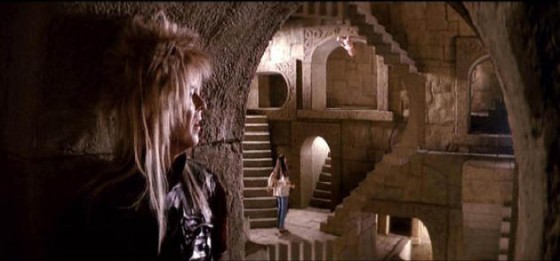
4. Double David – 1:27:53
In the film’s finale number, “Within You”, David Bowie’s Goblin King messes with our sense of direction as he jumps and flips around the disorientating Escher artwork brought to life. Early in the sequence he jumps off a ledge, only to reappear simultaneously in a background doorway, now seemingly obeying a pull of gravity at 90° to that which acted on his leap. A shot of Bowie jumping off the ledge cuts to another of him coming through the doorway. The doorway is filmed with the camera on its side, and to finish the action of the first Bowie’s leap, a body double is pulled across frame on a dolly. This can be seen at 25:36 in the behind-the-scenes documentary:
This kind of low-tech but ingenious filmmaking is in danger of dying, as CGI is perceived as the only tool to create illusions. But with a little thought, a little planning, cunning framing, and a knowledge of how to use editing (or lack thereof) to your advantage, very effective illusions can still be created in camera.
If you enjoyed this post, you may also like:
The 10 Greatest Movie Puppets of All Time – including the aforementioned Humongous
Double Vision – five ways of having one actor play two characters in the same scene
Top Five Low Tech Effects – tipping my hat to the cheekiest in-camera effects used in big Hollywood movies
Five Simple But Effective Camera Tricks – revealing some simple camera tricks I’ve used in my own films
